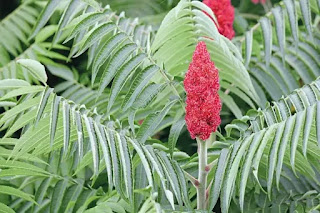What’s the Sumach?
A Scientific Look into the Wonder Spice
Nature offers us many powerful herbs, and sumach plant is one of them. Often overlooked, this vibrant red spice is not only flavorful but packed with health benefits. Let's explore the botanical roots, uses, and science behind this ancient plant.
What is the Sumach Plant?
The sumach plant (Rhus coriaria) is a flowering shrub found in the Middle East, parts of Asia, and the Mediterranean region. It produces red berries that are dried and ground into a tangy spice.
Botanical Classification of Sumach Plant
Scientifically, sumach belongs to the Anacardiaceae family, which also includes mango and cashew. It grows in dry, rocky areas and is known for its bright red berries and feather-like leaves.
Common Names and Origin of Sumach
Sumach is also spelled as “sumac.” In Arabic, it’s called “summaq,” and in Persian, “somāq.” It's been used since ancient times in both medicine and cooking, especially in Middle Eastern cuisine.
Health Benefits of Sumach in Daily Life
Many people use sumach spice not just for flavor, but for health. It’s rich in antioxidants, vitamins, and natural acids.
Antioxidant Properties of Sumach Spice
One of the top health benefits of sumach is its antioxidant power. It helps fight free radicals in the body, which can cause aging and diseases like cancer and heart issues.
Sumach for Inflammation and Immunity
Studies show that sumach may reduce inflammation and boost the immune system. It has antimicrobial and antiviral properties, making it a good natural support during cold seasons.
Culinary Uses of Sumach Across Cultures
The tangy taste of sumach spice makes it a favorite in kitchens worldwide.
Sumach in Mediterranean and Middle Eastern Cuisines
In countries like Turkey, Iran, and Lebanon, sumach is a key ingredient in kebabs, salads, and rice dishes. It gives food a lemony, zesty flavor.
How to Cook with Sumach in Modern Recipes
You can sprinkle sumach on roasted vegetables, chicken, or even popcorn. It’s also a great addition to salad dressings and marinades.
Scientific Research on Sumach and Its Components
Modern science supports what traditional medicine knew long ago. Clinical studies reveal sumach has anti-diabetic, anti-inflammatory, and anti-fungal properties.
🔗 https://web.facebook.com/vesojlife
Sumach vs Sumac: Spelling, Types, and Differences
Though both spellings are used, “sumac” is more common in the U.S., while “sumach” is used in the UK. But both refer to the same plant.
However, be careful—not all sumac species are edible. Poison sumac (Toxicodendron vernix) is a different plant and should be avoided.
Where to Buy Quality Sumach Powder or Extract
To enjoy the full benefits, buy from trusted sources that sell organic sumach extract or powder.
🔗 You can try https://web.facebook.com/vesojlife
or local herbal shops.
Q1. Is sumach safe for everyone?
Yes, in normal food amounts. But people allergic to cashews or mango should be cautious.
Q2. Can sumach help with weight loss?
It may support weight loss by reducing blood sugar and inflammation, but it’s not a miracle cure.
Q3. What does sumach taste like?
It’s tangy, slightly sour, and similar to lemon—perfect for balancing rich or oily foods.
Q4. Is sumach a spice or a herb?
It’s technically a spice made from dried berries, though often used in herbal remedies.
Q5. Can I grow sumach at home?
Yes, if you live in a dry, warm climate with well-drained soil.
Conclusion
The sumach plant is much more than a colorful spice. Its health benefits, culinary value, and scientific backing make it a hidden gem of nature. If you’re looking for a new, natural way to boost your diet and well-being, sumach spice is worth exploring.


.jpeg)
.jpeg)
.jpeg)
